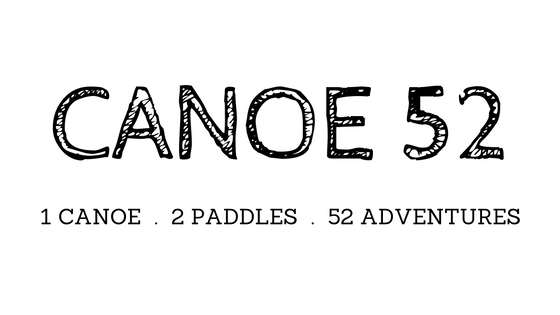Knowing exactly where to paddle in Cleveland was a gamble. After several days of pristine paddling in the Boundary Waters and Turtle-Flambeau Flowage, we were not exactly sure where to check out. After researching area outfitters and message boards, we decided to explore the Cuyahoga River in Cleveland, Ohio. This was certainly different from our two previous experiences. This was very industrial. A city set upon a river. A great city with a deep relationship with the Cuyahoga River.

Cuyahoga on Fire
We decided to access the river from Irishtown Bend, just a few miles from Lake Erie. The first thing we noticed was the number of bridges in the area. Two bridges seemed to run between the same two neighborhoods. It was overwhelming. A historical marker explained that there was turmoil over these two bridges. This dates back to when today’s Cleveland was actually two cities. Each city occupied opposing banks of the Cuyahoga River. The other city, Ohio City, was a rival with Cleveland. The citizens committed acts of violence and vandalism during the bridge placement debate. The two cities competed for dominance in the 1840s. In the end, the Cleveland outmaneuvered Ohio City and ultimately annexed its rival to create the sprawling city we know today.

The area of the river we paddled was once known for catching fire. The pollution of the waterway made flammable conditions dating back to the 1860s. In 1969, a passing train car sparked a fire on the river. The public relations by the mayor helped solidify the Environmental Rights movement of the 1970s. In the 1980s, the Cuyahoga River was listed as one of 14 American Heritage Rivers, a further attempt to reclaim the river from degradation. The section of the river we explored was dredged out and slow-moving. The water was far from clear. This aligns with reports of non-point pollution, sewer spillovers, and other upstream sources of filth.
Reclaiming the River

After all of these years and efforts to reclaim the Cuyahoga, life is teeming back. In the Irishtown Bend area and north toward the Erie, people and businesses are coexisting with the River’s industrial roots. Restaurants with patio views. Rowing clubs with direct river access. Tugboats slug by while trams rattle along. The public boat slip we accessed was a gem. An easy portage to a seasonal dock. We slipped our canoe in alongside docked dragon boats. Along the route, we saw some people taking in the scenery and others engaged with industrial labor. A symbiotic relationship between recreation and industry. Like a rose growing from a crack in the concrete, a connection to the river and the natural environment are blooming once again.





